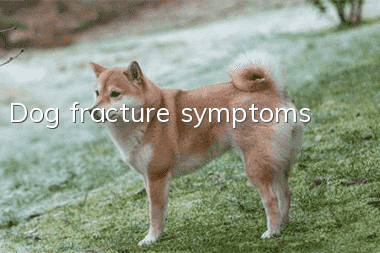Dog fracture symptoms

After a dog breaks a bone, he or she will experience symptoms such as pain to touch, sensitivity, uneven force on the leg, and reluctance to move. At the same time, it can also be found that the dog's affected limbs are in abnormal postures such as shortening, bending, and elongation. If the dog's affected limb is allowed to bear weight or move passively, abnormal activities such as flexion and rotation will occur, and bone friction sounds can be heard at the broken end of the bone. In addition, symptoms such as bleeding, swelling, pain, and lameness may also be seen.
The symptoms of dog fractures are also related to the position of the bones. The following are the two most common ones.
1. Long bone fracture
If a long bone is fractured, the dog will generally be unable to stand and suffer severe local pain. If not treated in time, secondary bacterial infection may occur, and symptoms such as edema and bleeding may occur.
2. Fracture of small bones at joints
If it is a small bone fracture at the joint, there will generally not be much clinical symptoms, but there will be obvious pain when the dog is touched.
The main ways to diagnose the severity of fractures are DR and CT examinations. It is recommended that owners seek medical treatment in time when they discover symptoms of fractures in their dogs, so as not to miss the best treatment time.
Note: When a dog has a fracture, you need to be careful not to let the dog do strenuous exercise, and take the dog to the pet hospital promptly to take X-rays to check the location and type of fracture, and then decide on a specific surgical plan.
- How to train Teddy puppy? How to train Teddy dog!
- Can dogs eat vitamin e?
- Can pet dogs eat leftovers?
- Why do dogs eat grass?
- What is the reason why puppies have a lot of eye droppings?
- Clinical symptoms of orchitis (epididymitis) in dogs
- Why do dogs dig holes?
- What should I do if my dog bites things randomly? How to get rid of my dog’s habit of chewing things!
- How to get your Rottweiler to love nail clipping
- Why does Teddy have his tail docked?



